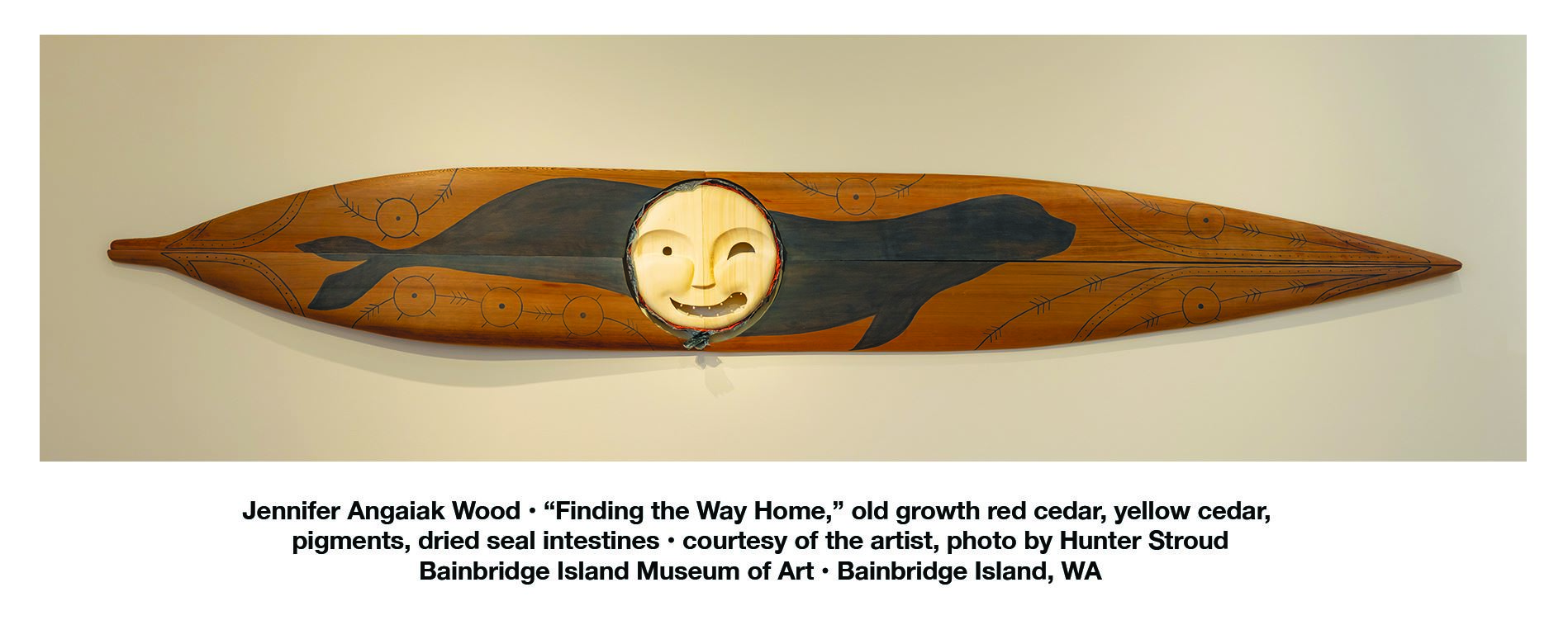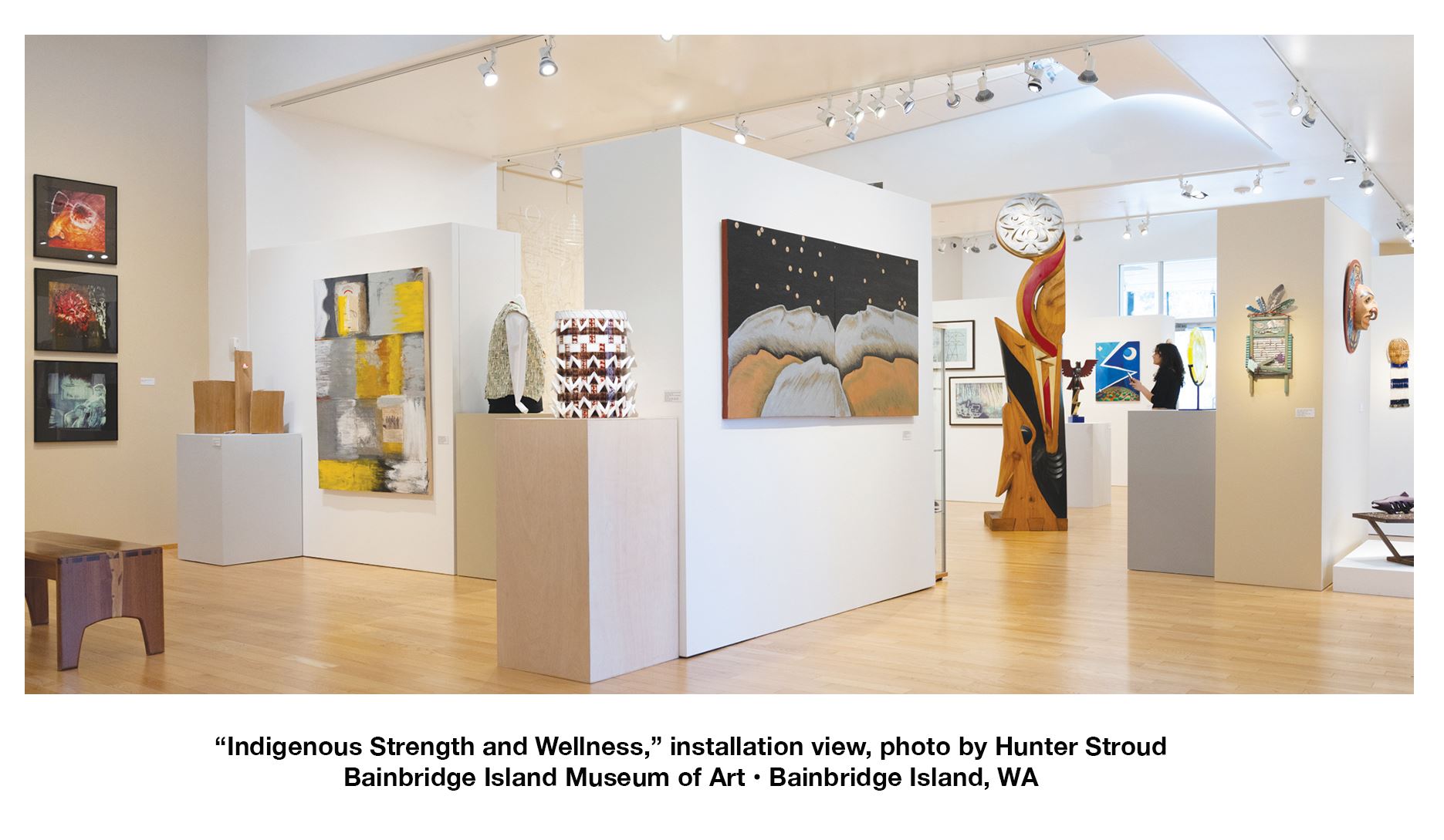
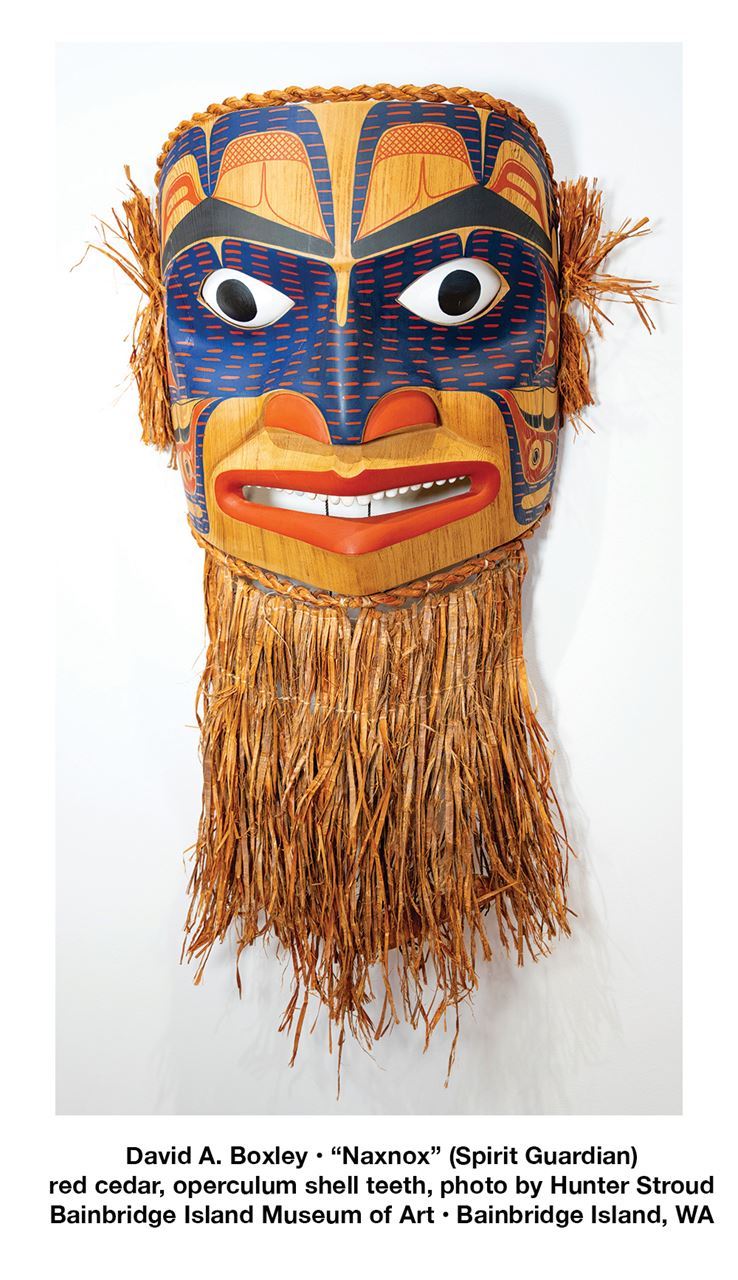 In Memory of Steven Charles.
In Memory of Steven Charles.
Many famous contemporary Indigenous artists first had major solo exhibitions at the Sacred Circle Gallery curated by Steven Charles from the late 1980s to 2002. His contribution to our awareness and understanding of contemporary Indigenous art in the Northwest cannot be overstated.
 To prove that point “Indigenous Strength and Wellness,” curated by Gail Tremblay (Mi’kmaq and Onondaga), Robin Sigo (Suquamish) and Chief Curator Greg Robinson, includes eminent artists like Marvin Oliver (Quinalt/Isleta-Pueblo), Joe Feddersen (Confederated Tribes of the Colville Reservation), John Feodorov (Navajo [Diné] and European), Preston Singletary (Tlingit), and Lillian Pitt (Warm Springs/Wasco/Yakama). But it spans several generations and a wide range of media.
To prove that point “Indigenous Strength and Wellness,” curated by Gail Tremblay (Mi’kmaq and Onondaga), Robin Sigo (Suquamish) and Chief Curator Greg Robinson, includes eminent artists like Marvin Oliver (Quinalt/Isleta-Pueblo), Joe Feddersen (Confederated Tribes of the Colville Reservation), John Feodorov (Navajo [Diné] and European), Preston Singletary (Tlingit), and Lillian Pitt (Warm Springs/Wasco/Yakama). But it spans several generations and a wide range of media.
As we approach the museum, male and female “Welcome Figures” by Kate Ahvakana (Suquamish) greet us in a multi-story window. They include symbolism that refers to treaty signing as well as contemporary challenges to save the salmon. Above in “Sunrise Flight,’ a blue jay brings us light and health.
The more than twenty artists in the exhibit transform traditional imagery to address urgent issues of the contemporary world. For example, Alison Bremner (Tlingit) dramatically places an imitation melting ice cream cone inside an historic cedar basket (of no financial value because it was damaged), suggesting our current condition comes from the ignorance and disrespect of historic practices.
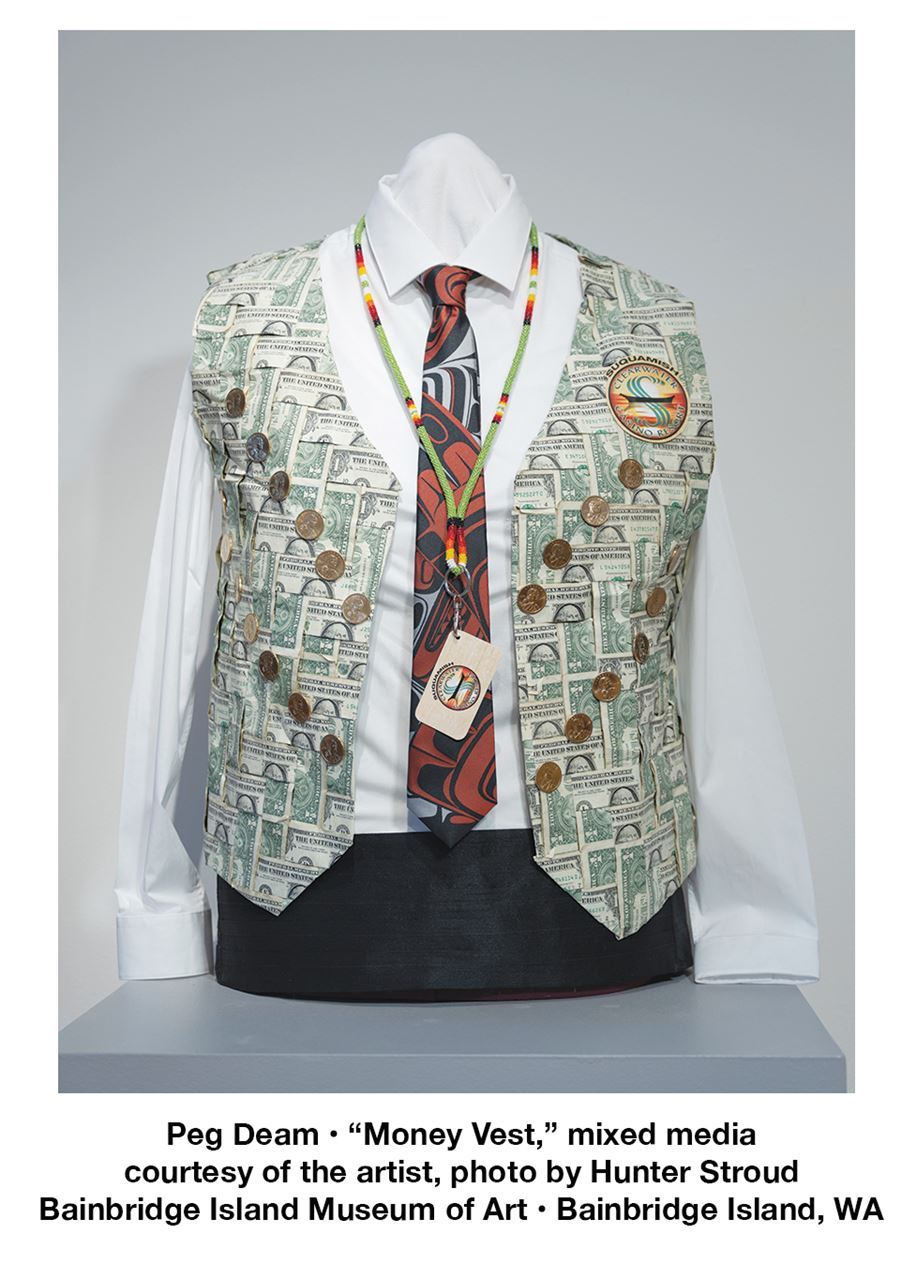 Ed Archie NoiseCat (Canim Lake Band of Shuswap Indians and the Stl’atl’imx) deliberately echoes the title of Munch’s well known work in his totem-like “Scream.” A monster-like black oil pipe line grabs an orca above and kills salmon below.
Ed Archie NoiseCat (Canim Lake Band of Shuswap Indians and the Stl’atl’imx) deliberately echoes the title of Munch’s well known work in his totem-like “Scream.” A monster-like black oil pipe line grabs an orca above and kills salmon below.
In the context of the theme of strength and wellness, several artists inspire us to re-double our efforts to resist the exploitation of the earth. Joe Feddersen’s “Purple Rain,” includes his familiar symbols of the outlines of electrical towers, but now even those are being assaulted by pollution from the sky, as horses gallop wildly away in the foreground.
John Feodorov addresses pollution on the Navajo reservation with flat yellow squares evoking uranium as an ironic twist on the squares of utopian modernist painting.
Corwin Clairmont (Confederated Salish and Kootenai Tribes) depicts the devastation associated with the Alberta tar sands in a selection from his multi-paneled installation “Two-Headed Arrow/The Tar Sands Project” Both photography of the destroyed environment, and symbolism, such as the two-headed arrow, point to our current choices between extraction and life.
Humor is, of course, rarely absent from Indigenous art, but humor with a twist. Peg Deam (Suquamish) speaks to perceptions of casino culture with her money vest woven from one dollar bills, George Washington prominently visible; Indigenous casinos profit from white people’s vices. The Sacagawea dollars on the vest suggest another layer of irony.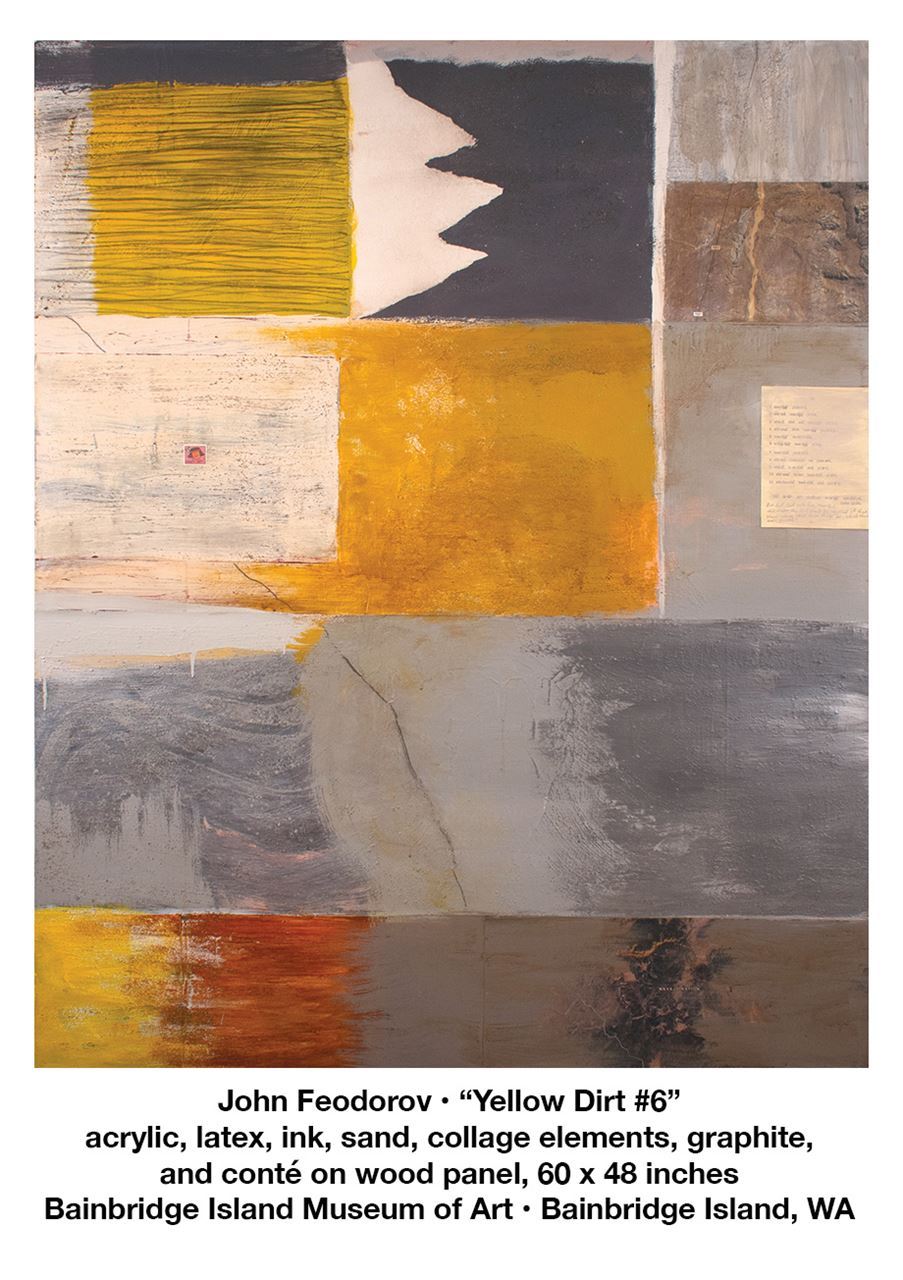
Masks appear in many guises. Two strong masks by David A. Boxley (Tsimshian)speak to spirit powers and supernatural forces. “Killer Whale Transforming Mask” opens during a performance to reveal the duality of spirits.
On “His X Mark,” by Jennifer Angaiak Wood (Yup’ik), ink drips over an anguished mask/face; a headdress of antique pens and points refers to the pens used to sign treaties of the mid-nineteenth century. The earrings are giant Xs referring to the mark made by leaders on those scandalous agreements.
Linley Logan (Tonawanda, Seneca Nation) makes coyote masks out of recycled bleach bottles! Toma Villa (Yakama) creates looming wall hung masks not intended to be worn.
Be sure to look carefully at the “Teachings of the Tree People” near the end of the show. Small cedar squares designed by artists from over fifty different cultures all over the Pacific Rim created a collaborative project for the House of Welcome — Evergreen Longhouse, Evergreen College.
I will end with “Finding the Way Home,” a wall sculpture by Jennifer Angaiak Wood: a kayak carved from old growth cedar painted on the bottom with the outline of a seal, and a sun-like face wearing a scarf of dried seal intestine at the center. Angaiak Wood’s work suggests peaceful journeys.
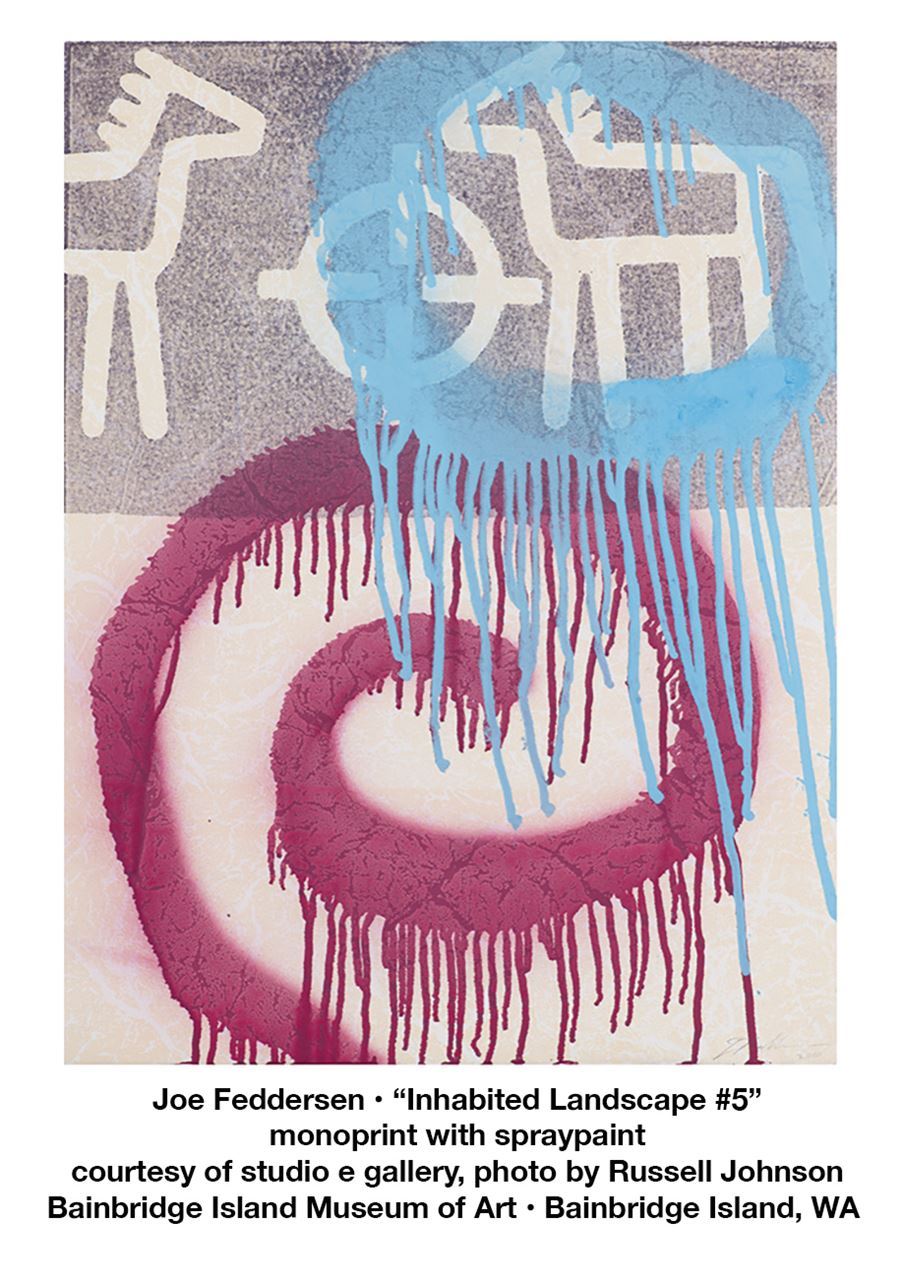 The exhibition also includes ribbon shirts and beaded COVID masks by Suquamish artists, included in “Sovereign Style,” the Suquamish Foundation’s annual fashion show. Exhibition-related programs include poetry readings, films, history, and dances.
The exhibition also includes ribbon shirts and beaded COVID masks by Suquamish artists, included in “Sovereign Style,” the Suquamish Foundation’s annual fashion show. Exhibition-related programs include poetry readings, films, history, and dances.
“Indigenous Strength and Wellness,” with funding from the National Endowment for the Arts, gives fitting tribute to Steven Charles, the pioneering curator of contemporary Indigenous art. We see his legacy expanding in the present and the future, as new generations of Indigenous artists continue to address the urgent concerns of their lives and our planet.
Susan Noyes Platt
Susan Noyes Platt writes a blog www.artandpoliticsnow.com and for local, national, and international publications.
“Indigenous Strength and Wellness” is on view through June 4 at Bainbridge Island Museum of Art, located at 550 Winslow Way East and open daily 10 A.M. to 5 P.M. For information, visit www.biartmuseum.org.
